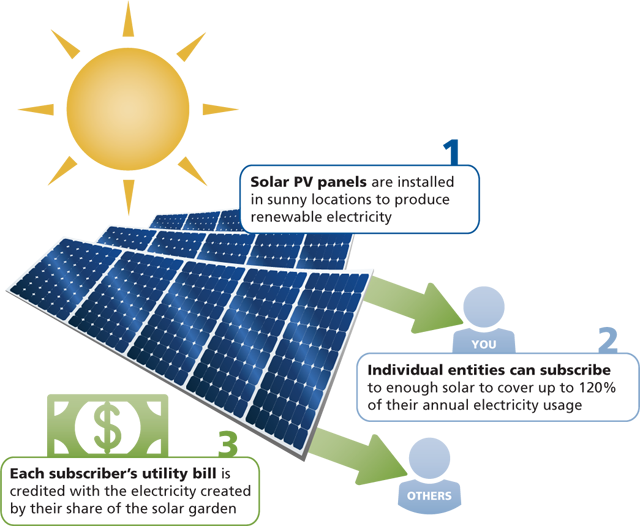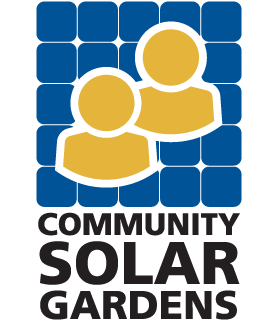Connexus Energy, a cooperative electric utility serving the northern Twin Cities suburbs, said recently that it plans to build one of the state’s largest community solar gardens. With 792 solar panels and an output of 245 kilowatts, the project is several times larger than other solar gardens now operating or under construction in Minnesota.
The project opens the door for hundreds of the utility’s customers to buy a share of the electrical output and have it credited to their monthly bills. It’s also a sign that cooperative power companies are leading Minnesota’s community solar development. Connexus’s $750,000 SolarWise project will be the state’s largest co-op solar garden. Two other co-ops have built smaller ones, and a third co-op will open a 73-kilowatt solar garden in June. At least 18 other co-ops are planning them, according to Great River Energy, the Maple Grove-based cooperative power producer.
In a solar garden, customers subscribe to a share of a centrally located solar array, avoiding the need to install panels at their residences or to be responsible for maintenance. It appeals to renters or homeowners whose properties are unsuitable for solar panels, and the investment can be a hedge against future electric rate increases.
How it Works
- Purchase solar panels located in the proposed Ramsey community based solar garden
- Energy produced from the solar garden helps supply energy to Connexus Energy’s distribution system
- While the energy created doesn’t directly power your home, you will receive a credit on your electric bill based on the output of the system
- SolarWise is a community based solar garden designed to make it easier and more affordable for members to support an alternative, environmentally friendly, energy option

Learn more about how community solar gardens work in a guide from CERTs.
Connexus customers can invest in one or more of the solar panels for $950 each, entitling them to a proportional share of the output for 20 years. The ground-level array will be built, starting in July, at the company’s headquarters in Ramsey, and should be operational later this year.
“It is a cost-effective, hassle-free way for customers to get into the solar market,” said Don Haller, the cooperative’s vice president of member and community relations.
Benefits of SolarWise
- No costs to install solar panels on your property.
- No worrying about maintenance or repair costs.
- Lock in today’s electric rate for the community solar portion of your Connexus Energy bill for the next 20 years.
- Available to both homeowners and renters alike.
Connexus is the state’s largest retail power cooperative, with 126,000 members in seven counties. The utility gets electricity from Great River Energy, which last year generated 67 percent of its power by burning coal.
Haller said the retail co-op, which is owned by its customers, surveyed them and found a strong interest in solar power. Other Minnesota co-ops have discovered the same thing.
In Pelican Rapids, Lake Region Electric Cooperative completed a community solar array in January and has most of the panels subscribed, said CEO Tim Thompson. “Our members have an interest in solar, and we wanted to be the energy solutions provider,” he said. “We are very pleased with it.”
In Rushford, Tri-County Electric’s “Renewable Rays” community project was so popular that the cooperative decided to double its size. “There is a lot of interest among people,” said co-op spokeswoman Brenda Tesch. “They don’t necessarily want to get involved with putting panels on their homes.”
To capture federal tax benefits for solar, cooperatives are using financial mechanisms that mimic those used with community wind projects. Private investors with a tax burden—in Connexus’s case, an insurance company—largely finance the project and take an ownership stake in the solar array. Those investors benefit from the 30 percent initial investment tax credit and accelerated depreciation over six or seven years. After that, the ownership flips back to the cooperative.
See original story in the Star Tribune >>



